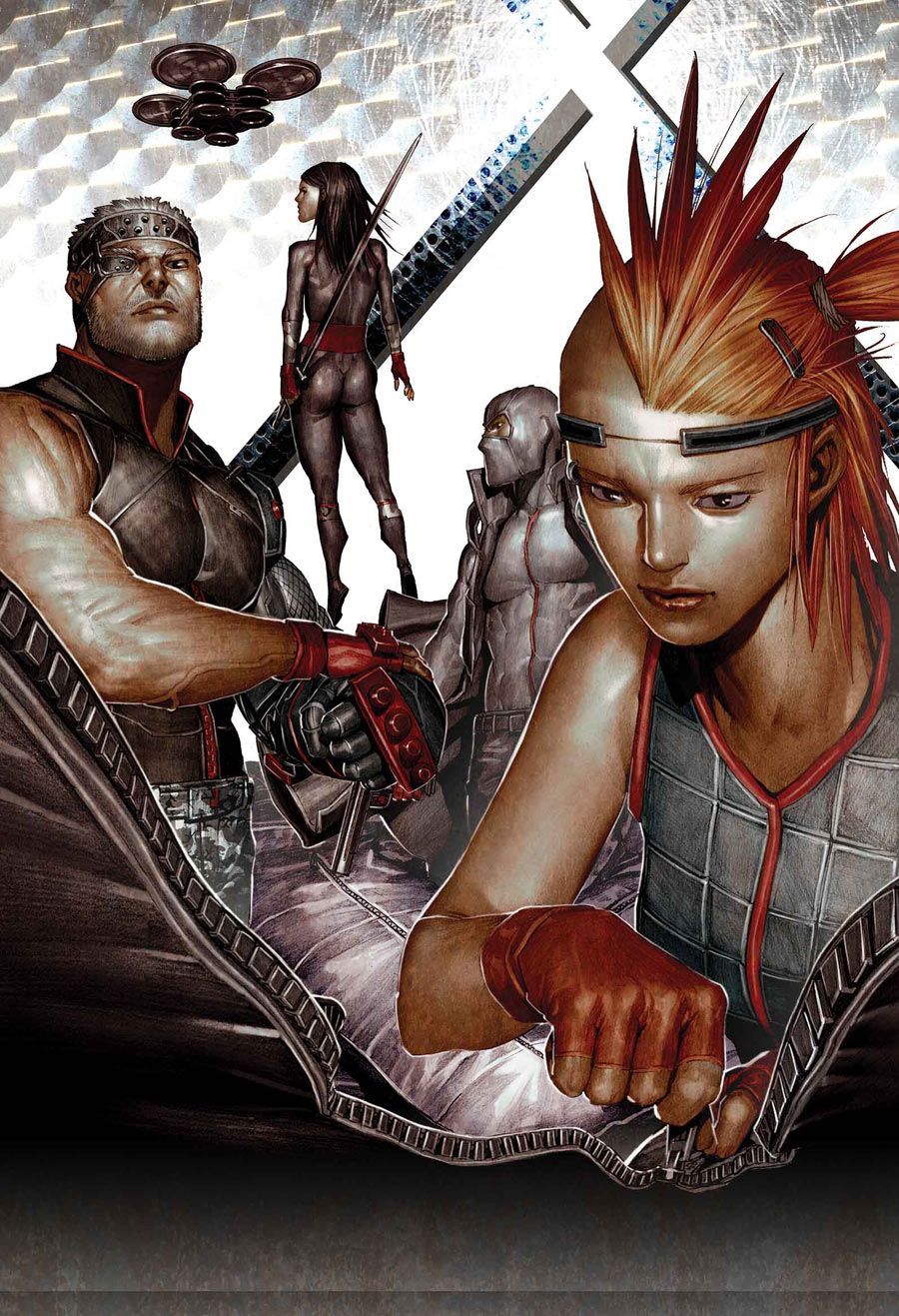There's a difference between having a conversation, and being lectured at by someone. The best kind of writing also results in a conversation of sorts, with a give and take between the creator and the audience; it engages the reader/viewer, and lets them feel like they're even briefly pulled into the story. On the flipside, being lectured at -- literally or metaphorically -- is a less pleasant experience, with a hard wall set up between the story and the audience. That barrier keeps there from being any real connection, because it's the opposite of inviting. In the case of "X-Force" #2, Si Spurrier and Rock-He Kim kick of the issue with Cable lecturing the various mutant teams. Unfortunately, the lecturing doesn't subside when the video link is severed.
"X-Force" #2 is a very cold, impersonal issue. Part of the problem is certainly that Spurrier is now writing an emotionless, cold-faced Cable as the lead. His conversations with the different teams (both X-Men teams, the Uncanny Avengers, X-Factor, and even the Brotherhood of Evil Mutants) certainly isn't a conversation, it's a character explaining why he is right and everyone else is wrong. The problem is, we're getting the verbal equivalent of having the lead character suddenly beat the rest of the Marvel Universe in combat; beating down other characters to make yours look superior. That never works in terms of action sequences, and it doesn't really work this way, either. Instead, you can almost see a new codename hovering over Cable's head, and it's "Jerk."
This could almost work if the rest of the cast was a little more interesting. But Marrow's little more than a slavering sidekick, Psylocke is a bit of a straight man setting up other people (notable Cable) to give their little speeches, and Fantomex is unmemorable. Even the new character, Meme, isn't attention grabbing. She feels more like a refugee from an old, early Warren Ellis comic, even as ideas and technology have moved forward. It's a comic lead by a block of ice (sadly not Iceman), and followed by equally stiff characters.
Not helping the stiff, cold nature is Kim's art. The problem with a lot of artists who work in this painted-style (although chances are it's being done on a computer) is a lack of energy in the finished product, and that's the result here. There's zero sense of movement; everyone's frozen in specific poses. Look at the bottom of page 6, as has three panels across the last row, each focusing on Cable as he comes closer to the reader. There's no sense of actual movement from one to the next; it's less a character walking down a hallway, and more like a series of photographs of an action figure in specific poses as it is brought closer to the lens. Add in a very muted brown color palette, and the comic ends up with a sameness from one page to the next.
When Rick Remender turned "Uncanny X-Force" into a tremendous critical success, it made sense that Marvel wanted the title to continue in his absence. But splitting the title into two X-Force comics felt like a bit of a disaster, and I'd hoped that boiling it back down to a single comic would fix the problem. At this point, though, I think "X-Force" is ready to be retired until a better take on the idea comes along. I'd rather see no "X-Force" than a bad "X-Force," and two issues in, I feel that this comic shows few signs of pulling out of its tailspin.

